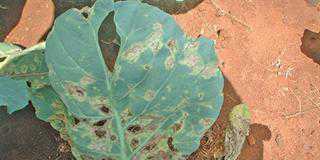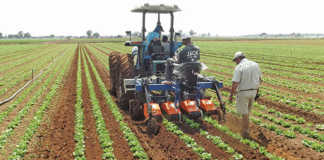With most crops, there is a direct correlation between spacing, plant size and time to maturity.
Wider spacing allows a larger unit which matures a little earlier. It won’t affect yield in most cases, within accepted parameters. But this is only partially true with onions.
As onions can be grown in a wide range of climatic conditions, it’s important for growers to understand the effects that spacing will have at different planting times. Some years ago, I supervised the agricultural side of a processing factory that obtained produce from both outside and company farms.
As we processed thousands of tons a year, we had to do in-depth trial work to establish the correct onion planting dates and spacing for the benefit of all concerned. Over a number of years we established that the optimum planting date was 9 March and that the best plant population for the variety used was around 400 000 plants/ha.
We’d occasionally get visitors from the Southern Cape who’d look at the plant population and imply we were way off the mark, as they were accustomed to planting around 1 million plants/ha for top yields.
They seemed to think we didn’t really know what we were doing – but our practices were based on painstaking, accurate research over several years.
Why the difference?
There is a good reason for this difference in plant population rates. We’d sow into seedbeds at the beginning of March, where the plants would grow for about two months before transplanting them in May.
The bulbs were lifted in October/November. Most of the growth took place in relatively cool conditions in a very short-day length area. In contrast, the Southern Cape growers would sow their seedbeds in May/ June and harvest in about January.
The transplants were put in the land in spring and would grow into hot conditions, with a meaningful amount of growth when daylight hours were much longer than ours.
This makes all the difference as sunlight is, after all, the ultimate limiting factor. Providing optimum water and nutrients will only help to optimise the limits set by day length. The same principle applies in short-day areas.
You could plant in January/February to mature into autumn or sow in April/May to mature into November. This could happen on the same farm. The farmer could plant the early crop at 400 000 plants/ha and the later one at 600 000 to 800 000 plants/ha due to day length and heat units. The exact spacing will depend on both variety or maturity month, and the size of bulb required for that market.
With two different varieties sown in April/May, one may mature in September/October and the other in November. The November-maturing variety would need to be spaced more closely for the same-sized bulb, or else the bulb may become too large for the target market.
The later the maturity date from a set planting date, the greater the yield potential. However, the greater the yield potential, the lower the expected price. Because it’s easier to get larger yields in November, the markets will usually be amply supplied and the law of supply and demand will prevail.
Set parameters
To perfect your spacing, run some trials, at least on a small scale, to determine how close you can get the plants without sacrificing optimum size.
Placing the plants too close together is also likely to produce elongated or pickle-size bulbs. Apart from yield, fluctuating size or discards will also mean more work in the pack house, which comes at a cost and will hamper coping with the crop within the right time frame.
If the plants are spaced too close together while they’re maturing into autumn, the risk of elongated bulbs is greatly increased. In extreme cases you could delay maturity so much that the crop will go through winter and will bolt. Observe, learn and stick with the information you gain, bearing in mind that a change of variety will have slightly different parameters.
Contact Bill Kerr on 016 366 0616 or email [email protected].
Caption:
Large bulbs are possible in short day areas for Novenber harvesting, if spacing permits.
BILL KERR













